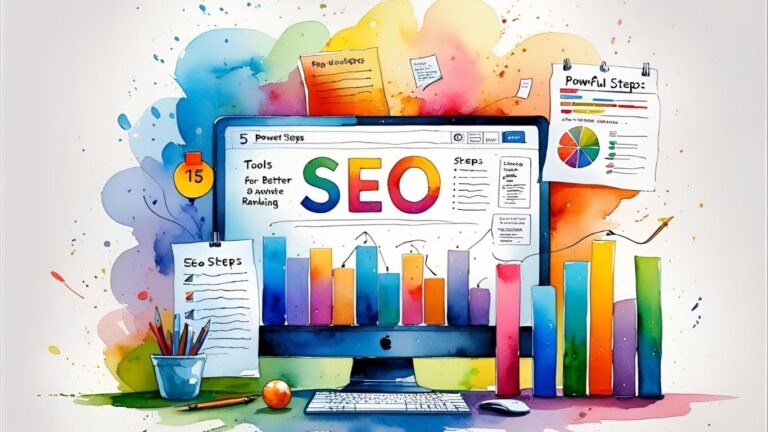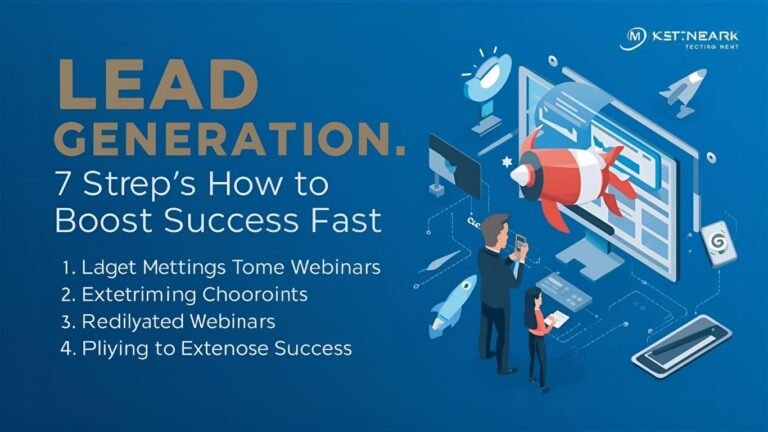How to Build a Multilingual Website for Global Audiences: 7 Key Strategies #MultilingualWebsite #GlobalAudience #WebDevelopment
How to Build a Multilingual Website for Global Audiences: 7 Essential Steps
Building a multilingual website is one of the most powerful ways to expand your reach and cater to a diverse, global audience. If you’ve ever wondered how companies like Amazon, Netflix, or Airbnb cater to people across the world, their secret often lies in an expertly designed multilingual website. But where do you even begin? How to Build a Multilingual Website for Global Audiences is not as daunting as it sounds once you break it down step by step.
In this guide, we’ll explore how you can make your website accessible to global users, enhance SEO efforts, and optimize user experience across different languages. You’ll learn everything from the translation tools to implementing SEO-friendly strategies, all with the goal of building a user-friendly experience that resonates with your visitors no matter where they’re located. Let’s dive in!
Why Multilingual Websites Matter for Global Growth
In a world that is more interconnected than ever, a multilingual website is no longer just an option—it’s a necessity. How to Build a Multilingual Website for Global Audiences starts with understanding why expanding your website to cater to multiple languages is essential for growth. A multilingual website opens the door to international markets, improving your brand visibility and accessibility.
Let’s take an example. Imagine a boutique in Paris—let’s say it only offers its content in French. If an English-speaking tourist walks into the store and finds no information in their language, they’ll likely walk out. The same applies to your website. When you offer only one language, you risk losing a significant portion of potential visitors.
Wider reach: Speak to audiences in their native language and create a deeper connection.
Enhanced credibility: Offering multilingual content builds trust with potential customers by showing respect for their culture.
SEO benefits: Having content in multiple languages increases your chances of appearing in search results for global audiences.
Step 1: Choosing the Right Translation Tools
How to Build a Multilingual Website for Global Audiences starts with selecting the right translation tools. Translation is more than just switching words from one language to another—it’s about maintaining your brand’s voice and ensuring cultural relevance. So, which tools should you consider?
Some popular translation tools include:
Google Translate: A quick and free tool for basic translation.
WPML: This is ideal for WordPress users. It allows you to translate your content directly within your WordPress admin panel.
Polylang: Another WordPress plugin, Polylang is excellent for multilingual content and integrates easily with other plugins.
When choosing a translation tool, think about scalability, ease of use, and long-term support. Also, consider professional translation services if your content is complex, such as technical documentation or legal pages. Automated tools work, but they lack the nuances and context that professional translators bring.
Affiliate Opportunity
If you’re looking for reliable, high-quality translation tools, check out our recommended list of professional translation services that deliver exceptional accuracy and support.
Step 2: Implementing Hreflang Tags for SEO
After you’ve got your content translated, How to Build a Multilingual Website for Global Audiences moves to SEO optimization. You can’t just translate and forget about SEO! This is where hreflang tags come into play. They are essential for telling search engines which language version of your page to show based on a user’s location.
Why should you use hreflang tags?
Regional targeting: Hreflang ensures that users see the right content in the right language.
Boosts search engine visibility: Hreflang helps search engines index content correctly, improving your site’s rank for international searches.
To implement hreflang tags correctly, you can manually insert them into your HTML or use plugins if you’re using WordPress. This small step helps to ensure that your website doesn’t suffer from content duplication penalties and that the right people see the right version of your site.
Affiliate Opportunity
Check out our complete guide to SEO tools for multilingual sites and learn how to integrate hreflang tags seamlessly.
Step 3: Designing a User-Friendly Experience
When you’re building a multilingual website, How to Build a Multilingual Website for Global Audiences goes beyond just text. It’s about creating a seamless, enjoyable experience for users regardless of their language preference. Here’s how to make sure your site is truly user-friendly:
Mobile optimization: Over half of web traffic comes from mobile devices. Your site should be as responsive in multiple languages as it is in one.
Cultural relevance: For instance, colors and symbols mean different things in different cultures. Ensure your design respects cultural nuances. A color that signifies happiness in one culture may mean something else entirely in another.
Think about it like visiting a foreign country. If everything around you is in a language you understand, you feel more comfortable. The same goes for web design. Keep the user in mind—help them feel “at home” on your website.
Step 4: Localizing Content for Different Regions
Now that your website is optimized for different languages, How to Build a Multilingual Website for Global Audiences requires attention to content localization. Translation alone isn’t enough—true localization means adjusting your content to reflect the values, trends, and interests of a specific region.
Here are a few things to consider:
Adapting the language tone: For example, a casual tone might work for younger audiences in the US, but more formal language might be necessary for businesses in Europe.
Currency and measurement units: Don’t forget to adjust these to match your audience’s local standards.
Local holidays and events: Tailor your promotions and content to align with local holidays, events, and cultural practices.
Localizing content increases engagement, making users feel as though your website was designed specifically for them. And this isn’t just about language—it’s about understanding their way of life and offering them something that feels personal.
Affiliate Opportunity
For seamless localization of your content, try our content localization software to adapt your website for any global market.
Step 5: Mobile Optimization for Multilingual Websites
As we’ve mentioned, mobile is a dominant force in web traffic, so How to Build a Multilingual Website for Global Audiences hinges on mobile optimization. But mobile optimization isn’t just about scaling down your website to fit smaller screens—it’s about ensuring that each language version of your site functions seamlessly across all devices.
Make sure you:
Use responsive design: A responsive website adapts to the screen size, whether it’s a desktop, tablet, or smartphone.
Test across regions: Test how the site works in different countries, as internet speeds and mobile behavior can vary.
Optimize loading speed: Use tools like Google PageSpeed Insights to make sure your multilingual site loads quickly in all regions.
Mobile optimization helps prevent high bounce rates and keeps users coming back. For multilingual websites, this step ensures that no matter where your visitors are located, they’ll always enjoy a smooth experience.
Step 6: SEO Strategies for Multilingual Websites
It’s not enough to simply translate your website and implement hreflang tags. How to Build a Multilingual Website for Global Audiences involves effective SEO strategies that cater to both local and global audiences. This means conducting keyword research for each language version and using localized keywords.
For instance, a keyword that works in English may not be as effective in Spanish or Mandarin. Here’s what you should focus on:
Localized keyword research: Use local SEO tools to find the best keywords for your target language and region.
Backlinks: Build backlinks from reputable websites in different languages to boost your SEO.
Metadata optimization: Make sure that titles, descriptions, and image alt text are translated and optimized for SEO.
By doing these, you ensure that your website ranks high in search engine results in various languages, increasing organic traffic from around the world.
Affiliate Opportunity
Looking for advanced multilingual SEO tools? Try our recommended SEO platform to track and optimize multilingual content effectively.
Step 7: Ensuring Site Speed Across Regions
One of the most critical aspects of a multilingual website is How to Build a Multilingual Website for Global Audiences that loads fast everywhere. Speed is crucial because slow-loading sites result in higher bounce rates, especially in countries with slower internet speeds.
Here’s how to boost speed for a global audience:
Use Content Delivery Networks (CDNs): CDNs store your content in multiple locations across the world and serve it from the nearest location to the user.
Optimize images and media: Compress images and videos to reduce load times while maintaining quality.
Enable caching: By caching your website’s content, you can reduce the load time for returning visitors.
Global access speed can make or break your site’s user experience. Fast-loading sites keep users engaged and improve your overall SEO rankings.
Conclusion: Building a Successful Multilingual Website
So, there you have it—How to Build a Multilingual Website for Global Audiences is about more than just translation. It’s about providing a seamless, culturally relevant experience for users worldwide. By following these essential steps—choosing the right translation tools, implementing hreflang tags, optimizing for mobile, and so much more—you’re well on your way to building a website that truly connects with a global audience.
Take it one step at a time, and soon you’ll see the fruits of your labor—an engaging, well-optimized multilingual site that expands your reach and helps you connect with audiences around the world. Happy building!
Bullet-Point Summary:
- Why Multilingual Websites Matter: Expanding your reach to global audiences and improving SEO performance.
- Choosing the Right Translation Tools: Explore options like Google Translate, WPML, and Polylang for seamless content translation.
- Implementing Hreflang Tags for SEO: Boost search engine visibility and ensure the right content reaches the right audience.
- User-Friendly Experience: Optimizing design, mobile responsiveness, and cultural relevance for global users.
- Content Localization: Tailor content, images, and marketing strategies for specific regions and cultural preferences.
- Mobile Optimization: Ensuring multilingual sites are fully responsive and optimized for mobile devices worldwide.
- SEO Strategies: Conduct keyword research, build localized backlinks, and optimize metadata for multilingual SEO.
- Site Speed Across Regions: Using CDNs and optimizing images for faster load times in different countries.
- Analytics and Tracking: Monitor user behavior and regional performance to improve engagement and user experience.
- Testing Multilingual Sites: Key metrics and tools for testing multilingual websites’ functionality and user experience.
- Legal and Regulatory Considerations: Complying with international laws and accessibility standards for multilingual sites.
- Preparing for Global Expansion: Scalability and future-proofing your multilingual website for continuous growth.
FAQs:
What is a multilingual website?
A multilingual website displays content in multiple languages, making it accessible to users from different regions and cultures. It often includes features like language selection menus and region-specific content to cater to diverse audiences.
Why should I build a multilingual website?
Building a multilingual website helps you reach a broader audience, improve SEO rankings, and create a personalized experience for users from different countries. It’s key for expanding your business globally and improving conversion rates.
What are hreflang tags?
Hreflang tags are HTML elements that tell search engines which language and regional version of a page to display based on the user’s location and language preferences. They help prevent SEO issues like duplicate content.
How can I translate my website content?
You can use translation tools like Google Translate, WPML, or Polylang to translate your content. However, for more accuracy and cultural relevance, professional translation services are recommended, especially for complex topics.
Do I need to optimize for mobile for multilingual websites?
Yes, mobile optimization is crucial for multilingual websites. As more users browse on mobile devices, ensuring your website is responsive and easy to navigate on smartphones and tablets is essential.
How do I localize my content for different regions?
Content localization involves adapting text, images, and cultural references to better resonate with the target audience. This may include adjusting currency, date formats, and offering region-specific promotions.
What’s the best way to implement SEO for multilingual sites?
Start by conducting localized keyword research for each language version of your site. Optimize metadata, create region-specific content, and build local backlinks to improve visibility in global search results.
How can I ensure my multilingual site loads quickly?
To ensure fast loading times, use Content Delivery Networks (CDNs) to serve content from servers closer to users’ locations, optimize images, and enable caching for faster access.
Is it expensive to build a multilingual website?
The cost can vary depending on the tools you choose (automated vs. professional translation) and the complexity of your website. However, investing in a multilingual website can increase your reach and ROI over time.
Can I automate translations on my website?
Yes, tools like Google Translate and WPML allow you to automate translations. However, automated tools might not capture nuances or cultural contexts, so professional translation is recommended for high-quality content.
Do I need to comply with international laws when building a multilingual website?
Yes, when targeting global audiences, it’s important to adhere to international privacy and accessibility regulations, such as GDPR in Europe, to avoid legal complications.
How do I measure the success of my multilingual website?
Track key metrics like traffic from different countries, engagement rates, and conversion rates to gauge the success of your multilingual site. Tools like Google Analytics can help monitor performance.
How can I test my multilingual website’s functionality?
You can test your site’s performance across different languages using tools like BrowserStack or test it manually by switching language settings. Focus on usability, speed, and content accuracy.
What CMS platforms support multilingual websites?
Popular CMS platforms like WordPress, Drupal, and Joomla offer plugins and features to support multilingual websites. These tools make it easier to manage content across different languages.
How can I keep my multilingual website updated?
Regularly update your content management system, translation tools, and ensure that all language versions are kept current with the original site. Automated translation tools often need manual review to maintain accuracy.
Explore These Valuable Resources
To deepen your understanding and improve your knowledge on building multilingual websites and expanding your global reach, here are some curated, high-quality resources:
Google’s Official Guide to Hreflang Tags
Dive into Google’s official guide on hreflang tags, an essential tool for multilingual SEO.
WPML Translation Plugin
A comprehensive solution for multilingual WordPress sites, WPML helps with seamless content translation and optimization.
Polylang Plugin for WordPress
Explore Polylang, a flexible plugin for adding multilingual content to WordPress sites and managing translations.
W3C’s Accessibility Guidelines
Learn how to build websites that are both accessible and usable for everyone, including those with disabilities, across various languages.
Moz’s Beginner’s Guide to SEO
For a foundational understanding of SEO, including key strategies for multilingual websites, Moz’s guide is a must-read.
Content Delivery Networks (CDNs): What They Are and How They Work
Learn about the importance of CDNs and how they improve the speed and efficiency of multilingual websites.
SEMrush Blog on Multilingual SEO
Gain deeper insights into multilingual SEO with expert tips and strategies from SEMrush.
HubSpot’s Guide to Creating Multilingual Websites
HubSpot offers a step-by-step guide to creating multilingual websites, from choosing translation tools to content optimization.
HubSpot Blog: The Importance of User Experience
Explore HubSpot’s insights on designing for a positive user experience, which is essential for engaging global audiences.
Google PageSpeed Insights
Use Google’s PageSpeed Insights to test and improve the load times of your multilingual website.
Backlinko’s SEO in 2021: The Ultimate Guide
This comprehensive guide by Backlinko provides in-depth SEO strategies, including those specifically tailored for multilingual websites.
A List Apart: Web Design Articles
Stay updated on the best web design practices for creating accessible and high-performing multilingual sites.
Yoast SEO for Multilingual Sites
Yoast offers tools and plugins for managing SEO on multilingual WordPress websites, helping improve visibility.
The Art of Website Localization – Smartling
Smartling’s blog provides extensive articles on website localization, including strategies and case studies.
Ahrefs Blog on SEO for International Websites
Ahrefs dives deep into international SEO, with practical tips for handling SEO for websites in multiple languages.
These resources will guide you through every step of building a multilingual website, from the technicalities of SEO to user experience and performance optimization. Happy learning!
Blog Recommendation:
For more insights on building successful websites and improving user engagement, check out this insightful blog post on GetRizwan.






